San Antonio's Wild Mushrooms
9/21/20196 min read
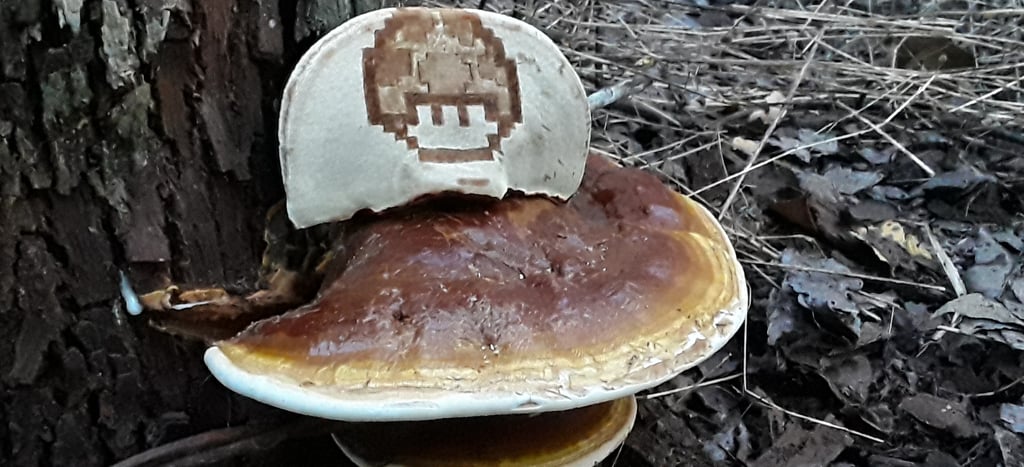

Have you ever wondered what types of mushrooms grow in San Antonio? Luckily for us, the diversity of fungi in San Antonio is pretty vast. When the fall rains rolled in last year, mushrooms popped up EVERYWHERE! Although many of them looked like they would pair great with pasta, there’s a high probability that they would have sent you on a journey to the ER.
Looking for wild mushrooms to eat is pretty risky business if you don’t have the proper skills. mushroom identification is a skill that takes time and patience to learn but is critical if you are looking for edible species.
I have located some gourmet and medicinal mushrooms in a few parks around San Antonio. If you are looking for a new type of mushroom to eat, the safest way is to buy them from your local grocer or, my favorite, grow them yourself.
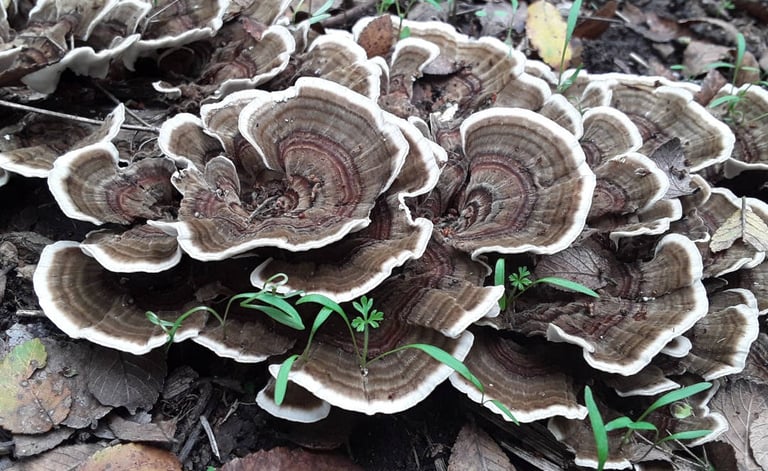

The Turkey Tail mushroom is an annual polypore and primary decomposer that can be found growing on dead hardwood. In this photo, the young clusters are growing on an unidentified tree stump, displaying multiple zonation’s of fuzzy brown pigments. When they grow in close proximity, they fuse together forming what I call a living masterpiece.
Turkey tail mushrooms have a flimsy leathery texture and are primarily foraged and cultivated for their medicinal properties. You can enjoy their medicine by making a decoction (tea) or by alcohol extraction*. I found these wonderful mushrooms growing on a stump near a paved trail at South Side Lions Park.
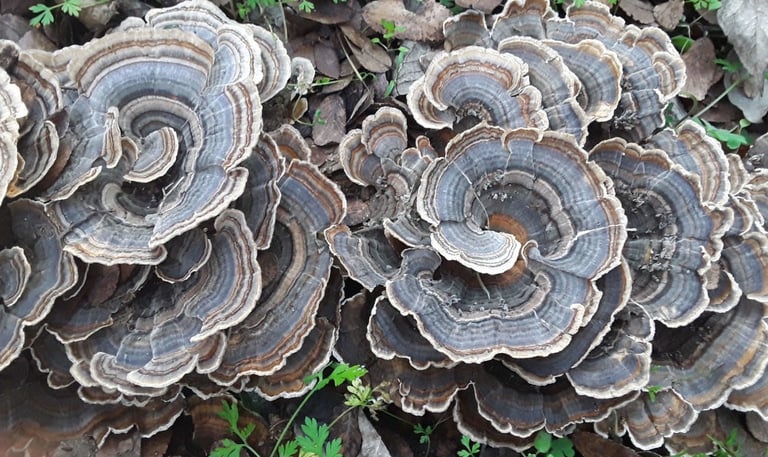

Ganoderma spp. – Reishi
The renowned reishi mushroom! I found this fruiting on an elm at South Side Lions Park while going for a morning run. You can find reishi’s growing in the early fall and summer. Even with the intense summer we’ve had, this resilient species still manages to grace the woods with it’s presence. These genera are primary decomposers but can be found growing on living and dead trees which may indicate that it is opportunistic. You can find this powerful medicinal mushroom in almost every park in San Antonio.
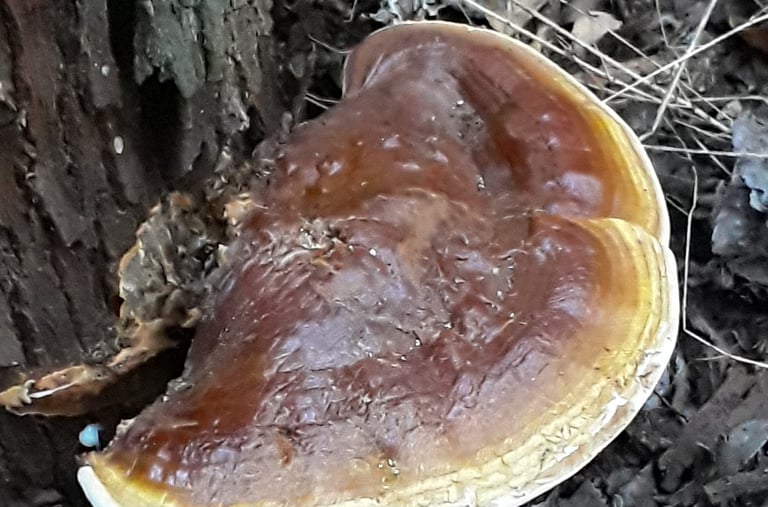

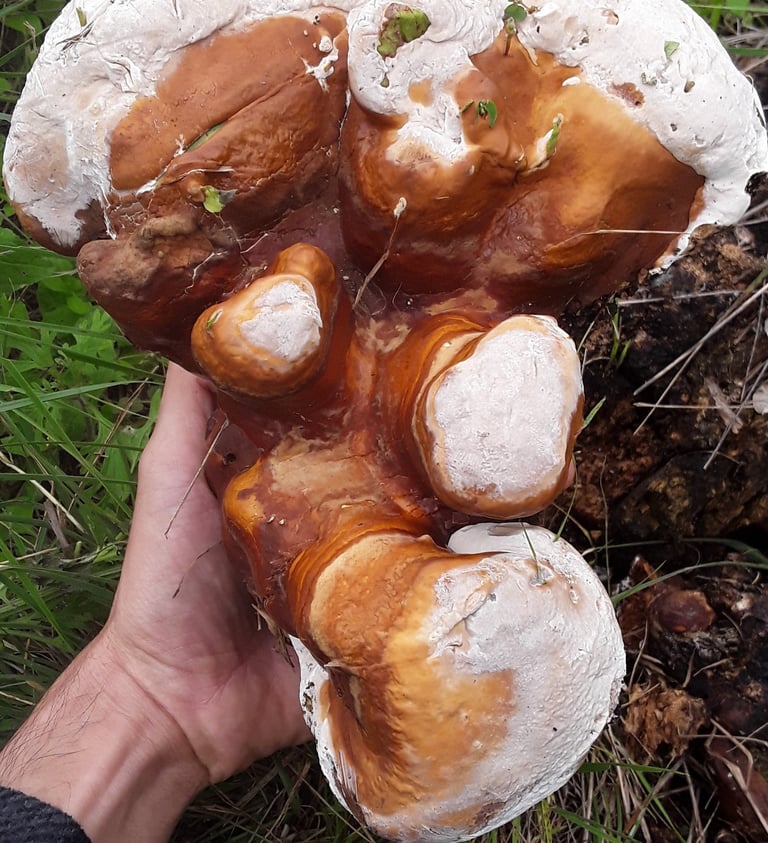

This unusual looking reishi fruit body was found at Phil Hardberger Park growing on an old stump. The most common shape of fruiting bodies are kidney shaped, fanning outward from a center location. I took this giant home and immediately took some tissue samples to preserve this beautiful specimen. Tissue culture is something that I will cover in a future post, stay tuned.
Aren’t these mushrooms the cutest? The Chanterelles mushrooms is a delectable gourmet mushroom that can only be found in the wild. This genera are mycorrhizal, which are fungi that form partnerships with plants by attaching themselves to its root system. The plant benefits from this association by accessing more water, nutrients, and minerals from the soil. In exchange, the plant shares sugars and carbon with the fungal partner. Now that’s teamwork!
You can find these growing primarily around oaks, but they partner with other tree species as well. When they are fresh, they have an apricot like aroma. Sometimes you pick more than mushrooms as there are other critters out there that enjoy a delicious chanterelle too. If you aren’t quick enough, larvae will take up residence inside the mushroom itself. This happened when I first forage them, however, I didn’t’ mind the extra protein.
Cantharellus spp. – Chanterelle
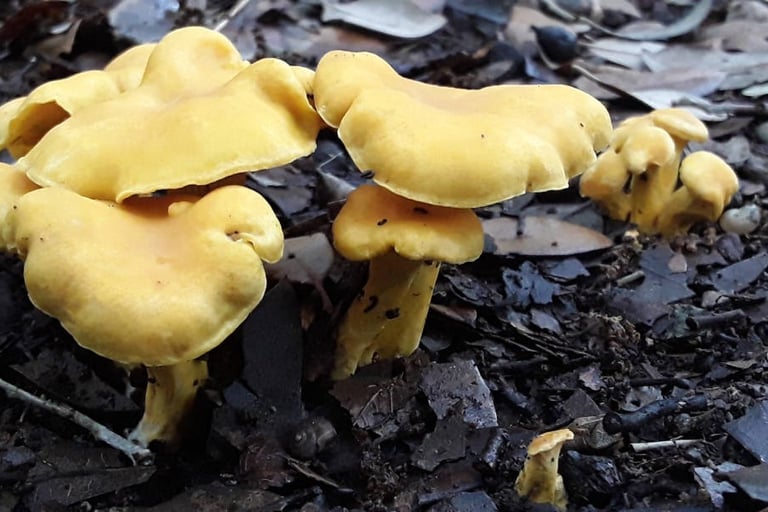

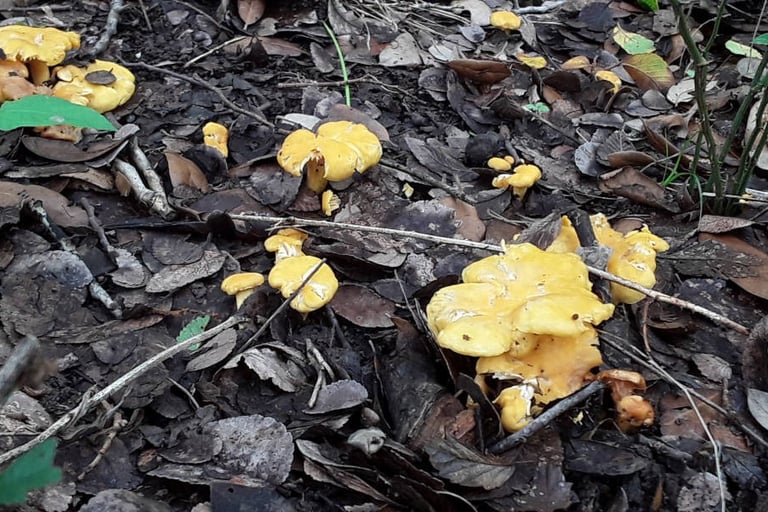

These lovely golden mushroom grow in pairs of 2-3, scattered, and emerge out of the ground. Remember, they are mycorrhizal and grow from the root system of the tree not the wood of the tree itself. The Turkey Tail and Reishi species are fairly easy to identify but the Chanterelles take some research and investigation to get a positive ID. DO NOT EAT ANY MUSHROOMS THAT YOU FIND THAT HAVE NOT BEEN PROPERLY IDENTIFIED BY EITHER YOURSELF OR A SUBJECT MATTER EXPERT.
Be Careful!
Some of the mushrooms you come across will look very tasty and look similar to an edible mushroom you’ve seen and eaten before, but mind you, it is VERY DANGEROUS to consume unidentified mushroooms. Proper identification is very complex and is far more difficult that plant identification, even with dichotomous keys. It takes quite a bit of analysis and cross referencing and even microscopy to get a positive ID of a wild mushroom.
Now I don’t want to discourage you from learning about them, just don’t eat anything that you find is what I’m getting at. Due to their enchantment, even I want to eat wild specimens I come across because they look so… edible. However, I know that’s not the case and I just hang with them for a bit, maybe snap a pic, and move on. I always recommend carrying a field guide of your region with to gain some more insight of your locations mycoflora. I carry Texas Mushrooms and Mushrooms of the Gulf Coast States with me when I’m out exploring.
Where to learn about fungi
Sources
Metzler, S., Metzler, V., & Miller, O. K. (2013). Texas mushrooms: A field guide. Austin: University of Texas Press.
Stamets, P. (2005). Mycelium running: How mushrooms can help save the world. Berkley: Ten Speed Press.
Mycobuddy LLC is not responsible for the misuse of this information and is not liable for damages, losses, or injury resulting from its use.
If you are curious about fungi and want to learn more about these fascinating organisms, check out our workshops page and register for one of our mycology workshops to explore this beautiful science.
You can also visit our books page to find the best resources for sharpening your mycology skills.
For those of you who live in central Texas, consider joining the Central Texas Mycological Society. They provide free resources and workshops in the central Texas region to support your mycological journey.
Now that you have become acquainted with a few of San Antonio’s mushroom species, I hope that you seek them out on your next walk in our city parks and experience all they have to offer.
As always be smart, be safe, and be present
Tremetes versicolor - Turkey Tail


Stay Real,
Louis San Miguel
Disclaimer: This blog post may contain affiliate links. When you make a purchase using these links, we receive a small commission at no extra cost to you. Please read our Disclosure for more info.
Where to find them
If you want to start looking for mushrooms, the first thing I recommend is going for a walk in the parks around the city a day or two after a good rain. I have no doubt you’ll find some mushrooms growing along side the marked trails. But, if you’re a rebel and prefer to go off trail, you’ll most likely run into hundreds of different mushroom species, all waiting to meet you. Simply being in their presence is enough to evoke a peculiar feeling that I can’t quite explain, but you’ll know it when you feel it.
There’s an abundance of mushroom species in San Antonio that have much to offer. Here are few that you may run into this fall.
